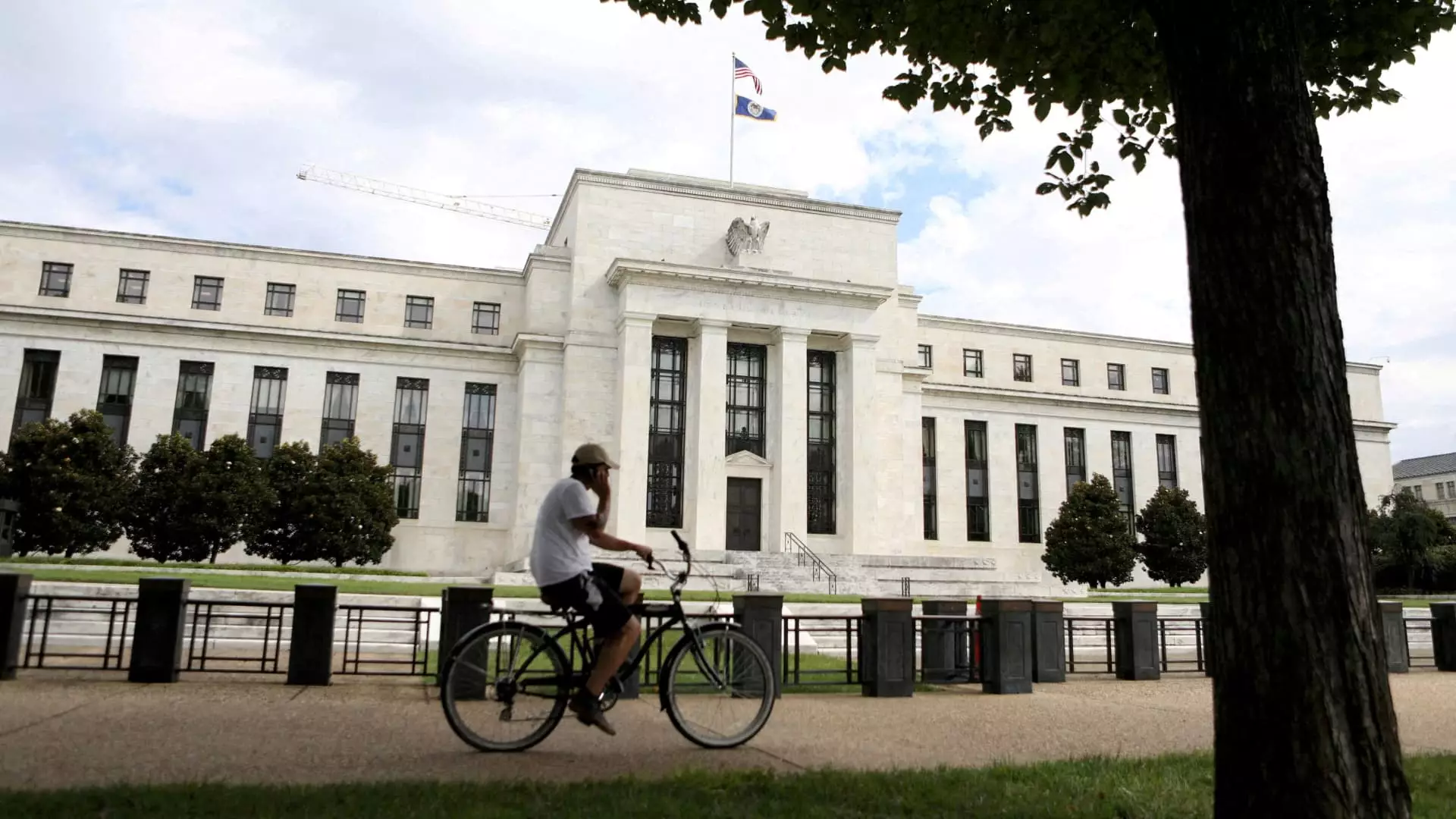Every time the Federal Reserve convenes, a wave of anxiety rolls through American households. With a notable recent jobs report and persistent inflation data, the Fed’s decision to maintain interest rates presents a complex scenario for everyday consumers. While some voices, notably former President Donald Trump, call for lower rates to alleviate inflation burdens, the reality is that such decisions are multifaceted, shrouded in economic complexities and political intricacies. As an ostensibly independent agency, the Fed’s decisions should ostensibly transcend political pressure, but do they really?
The Autonomy of the Fed: A Myth or a Reality?
The claim that the Federal Reserve operates independently is alluring but often deceiving. In theory, this independence is crucial for maintaining stability in monetary policy, allowing for decisions based on economic data rather than political expediency. However, Trump’s vocal opposition to elevated rates serves as a reminder that political forces can unnaturally sway economic instincts. While Fed Chair Jerome Powell professes a commitment to non-political monetary policy, the tension between the bank and political figures speaks volumes about the challenges it faces in decision-making.
Eugene Aleman, chief economist at Raymond James, illuminated an oft-overlooked truth: “Consumers are always the ones who pay the price.” This resonates with anyone wrestling with high prices and borrowing costs. The Fed can maintain its stance today, but the consequences ripple through the economy in ways that disproportionately affect ordinary Americans, especially those in lower-income brackets who are already teetering on the edge of financial distress.
Trade Wars: The Unseen Barrier to Rate Cuts
At the core of the Fed’s monetary policy is the assumption that the economy remains stable or improving. However, President Trump’s tariff-driven trade policies introduce a layer of uncertainty that complicates the possibility of rate reductions. Economists fear that impending tariffs could catalyze a widespread increase in prices, muddying inflation forecasts and making the Fed’s calculations all the more complex.
Greg McBride, chief financial analyst at Bankrate, captures this sentiment aptly: “Uncertainty rules amid a trade war.” The variables introduced by tariffs not only threaten to inflate consumer prices but also signal to the Fed that cutting rates could have unintended consequences. With market experts predicting a possible wait until July for any rate cuts, we are left in a perilous limbo that could worsen economic conditions for many.
The Pain of Consumer Debt: A Catch-22 Situation
As the rates for borrowing remain stagnant, consumers find themselves caught in a catch-22. Credit card rates are soaring, now sitting just above 20% for many borrowers. This decision by banks to stifle lending reflects a nervousness about the broader economic climate—hardly a surprising attitude when uncertainty looms. Matt Schulz, chief credit analyst at LendingTree, sheds light on this issue, saying that uncertainty leads banks to impose higher risks on consumers by inflating interest rates.
Amid skyrocketing credit card debt and average balances, many are left struggling to make ends meet. Total credit card debt has reached record highs, pushing consumers to the brink as they manage the constant pressure of higher prices. The burden is most keenly felt by the lower-income population. It creates a vicious cycle where expenditures inflate due to tariffs and interest rates, leaving consumers in a financial swamp with little hope of relief.
The Tightrope of Housing Affordability
The housing market finds itself in a precarious state, further exacerbated by high mortgage rates. Although we’ve seen slight declines in 30-year fixed mortgage rates—from 7.04% to 6.81%—homebuyers are still grappling with unaffordable ownership costs. This scenario is particularly troubling during peak home-buying seasons. Schulz articulates this dilemma eloquently, indicating that even slight declines in rates aren’t enough to invigorate the market.
New vehicle inventory is also tightening due to rising auto prices exacerbated by tariffs, making it clearer that every economic decision has a corresponding ripple effect. The burden of inflated prices does not discriminate—it affects everyone from new car buyers to prospective homeowners seeking shelter.
Student Loans: The Dark Side of Stability
For students approaching higher education, the stability of fixed loan rates shines in contrast to the chaos surrounding other forms of debt. With undergraduate student loan rates slated to rise from 5.50% to 6.53%, it becomes evident that while some individuals may feel somewhat shielded from erratic market fluctuations, rising educational costs come with their own burdens. This stability may come at the expense of federal loan forgiveness options, leaving borrowers in a lurch without viable pathways to ease their debt.
Yet, amidst these complex interconnections, a silver lining remains. High-yield online savings accounts still provide a sense of security for some, offering returns of up to 4.5%. While this environment of elevated savings rates offers some respite to consumers during turbulent economic times, it does not substitute for the financial health that should be accessible to all.
The sentiment is clear: while some may thrive in this environment, many more are left floundering, fighting a war against inflation and a landscape of uncertainty that ensnares their day-to-day lives.

